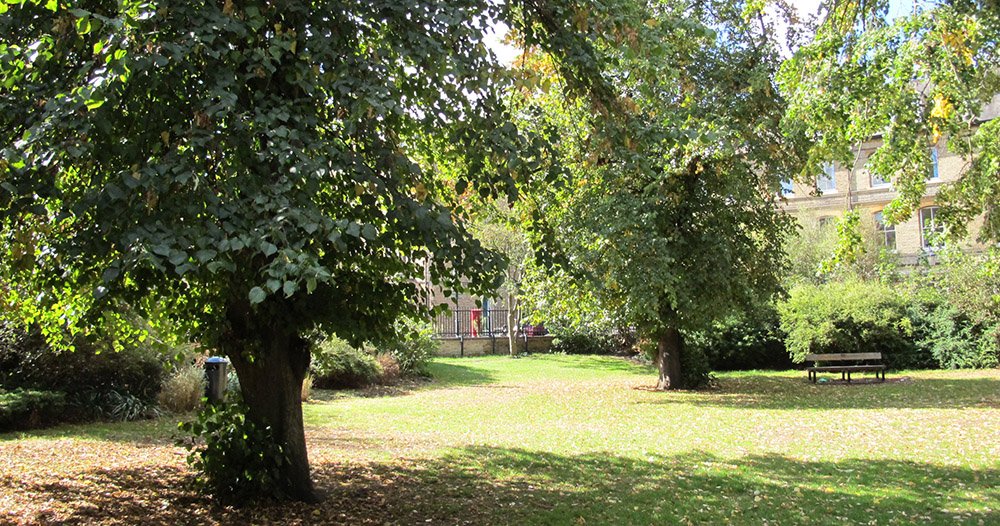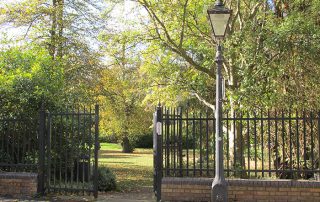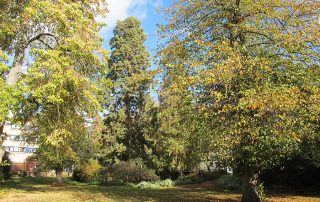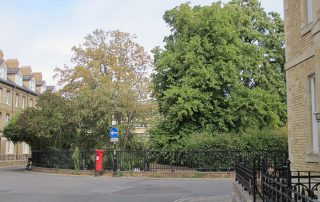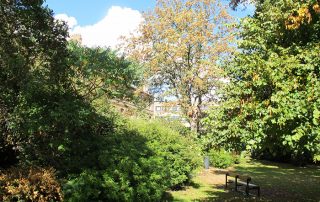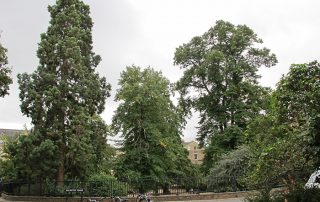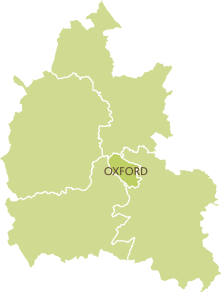Statement of significance
Once known as ‘Rats and Mice Hill’, the area that became Wellington Square replaced the workhouse that was occupied during the 18th and 19th centuries, before being developed as residential housing around a central garden in the 1870s.
Historical context
Land that subsequently became Wellington Square was part of the civil war earthwork defences built in the 1640s, which later became known locally as ‘Rats and Mice Hill’. In 1772, a workhouse was built on the five acre site, which was occupied 1775‒1865. The site was eventually sold to the university, and Wellington Square was constructed as speculative mixed domestic housing between 1869 and 1876. The garden at the centre of the Square was laid out at the same time as the surrounding buildings. The Square is named after the Duke of Wellington (1769‒1852), University Chancellor 1834‒52.
The garden
In form, the 0.2ha (0.5 acre) garden is rounded-rectangular, c. 55m x 48m. It is mainly laid to lawn and there are currently no paths. At the edges there are five curved beds of herbaceous plants, separated by five narrow extensions of the lawn that run up to the railings. Notably, the north-east bed has a mature Wellingtonia (Giant Sequoia). Slightly to it’s east, near the entrance, is a four-stemmed Lawson Cypress. The west bed has a mature sycamore and the south-east bed has a small copper beech. There are five mature lime trees towards the middle of the garden; the one at the centre is surrounded by the other four which lie roughly opposite lawn extensions towards the railings.
The beds contain small trees and herbaceous shrubs and plants, mainly evergreens. These include aucuba, choisya, cistus, cotoneaster, currant, deutzia, euphorbia, fatsia, garria, holly, laburnum, laurel, lilac, lonerica, mahonia, sorbus, viburnum, plus a few roses and grasses.
The gardens are well used particularly in summer time although there is only a single 4-person wooden bench. There is now only one entrance, through a gate in the railings on the east side.
Special features
There is a mature Wellingtonia (Giant Sequoia) tree towards the north.
Ownership and access
University Parks Service. Closed at nightfall.
Name of district
Oxford City
Grid reference
SP 5101 0680
Sources of information
MacCannell D (2016) Oxford: Mapping the City. Edinburgh, Berlinn
VCH (1979) The Victoria County History of the Counties of England. A History of the
County of Oxford. Vol. 4, The City of Oxford, ed. Alan Crossley. OUP
Tyack G (1998) Oxford: An Architectural Guide. OUP

